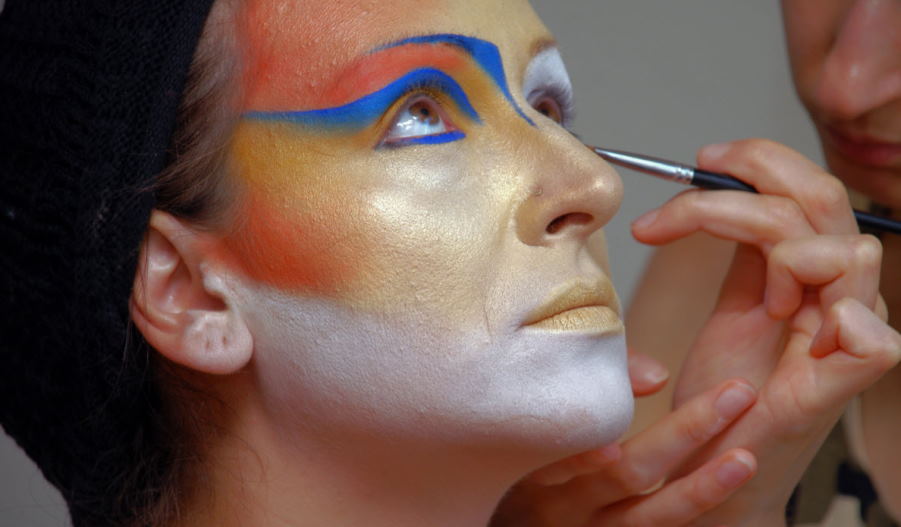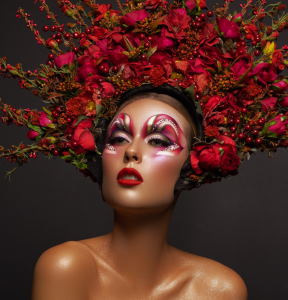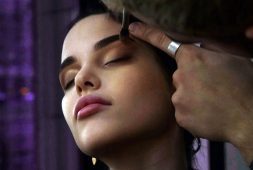
Using cosmetics and makeup to alter the appearance of actors on stage has been practiced for centuries, with one of the earliest known examples occurring in Ancient Greece. For generations, performers have used theatrical makeup to create a wide array of iconic looks that add an extra level of depth and personality to their characters. From subtle color changes that highlight facial features to more intricate designs meant to signify status or symbolism, it’s clear that theatre makeup has evolved both functionally and artistically throughout history. In this blog post, we’ll be exploring the journey from its origins in ancient Greek theater up through modern times— it promises to be an inspiring (and sometimes surprising!) look at how far theater makeup has come!
A history of theatre makeup: how it has evolved over the years
The history of theatre makeup spans thousands of years, beginning with the ancient Greeks in 500 BCE and continuing to the present day. The first use of makeup in the theatre was to transform performers into gods, goddesses, and other characters they were portraying on stage. Ancient Greek actors used white lead powder and soot to create their masks, while the Egyptians applied kohl around their eyes.
During the Elizabethan era, the iconic bald cap came into play when men playing female roles needed to cover their facial hair. A combination of rice powder for whitening skin tones and vegetable dyes was also used to give an ethereal feel to subjects such as fairies or supernatural creatures. Red was especially popular during this period as it signified royalty and power.

In the 19th century, major advancements in theatre makeup were made with the advent of panstick (a combination of wax and talc). This mixture allowed for a more natural look when applied to the face. Additionally, Max Factor created theatrical makeup specifically designed for stage use. This opened up a whole new world of possibilities in terms of color palettes and special effects such as contouring, shading, highlighting, and creating aging effects on actors.
Today, theatrical makeup is used to enhance characters’ appearances off-stage and on-stage. As a result, makeup artists are now able to create believable changes in ethnicity, age, and gender right before our eyes—no matter if it’s a Broadway show or an independent film. With technological advances, makeup artists can also incorporate prosthetics and special effects into their designs, making them more lifelike than ever before.
The history of theatre makeup has evolved over time and continues to be used to bring characters to life on stage and screen. From the ancient Greeks to today’s modern Hollywood productions, it is clear that theatre makeup has come a long way. But with new technologies constantly emerging, there is no telling what will be possible for upcoming performances!
The long evolution of theatre makeup
It has allowed for more elaborate and creative makeup designs, which have become an integral part of the performance. Additionally, it has enabled actors to create various characters, from clowns and historical figures to aliens and other nonhuman characters.
 Theatre makeup is used for various purposes, such as creating an illusion of age or youth, hiding blemishes or facial features, and highlighting certain features to draw attention to them. Depending on the production, theater makeup can also be used in tandem with prosthetics or body paint. In addition, theatre makeup has changed over time to adapt to new technologies and methods that better suit the needs of different performances.
Theatre makeup is used for various purposes, such as creating an illusion of age or youth, hiding blemishes or facial features, and highlighting certain features to draw attention to them. Depending on the production, theater makeup can also be used in tandem with prosthetics or body paint. In addition, theatre makeup has changed over time to adapt to new technologies and methods that better suit the needs of different performances.
Theatres today take advantage of advanced techniques such as airbrush makeup and silicone props, which offer a wide range of options for creating unique looks. Airbrush makeup is one of the newer tools available to theatre professionals, allowing them to create intricate designs easily. Airbrushing also offers greater longevity, allowing actors to stay in character for longer periods.
Silicone props are another form of theater makeup that has become increasingly popular over recent years. Several benefits come with silicone-based products, such as their ability to be reused without losing their quality, their lightness when compared to other materials, and their durability in hot or cold environments. In addition, silicone props can help bring characters to life by giving them an extra layer of detail that isn’t possible with traditional makeup.
Theatre makeup is an ever-evolving art form, and as technology continues to evolve, so will the makeup used in productions. The endless possibilities allow actors to create any look imaginable with the right tools and techniques. Whether it’s a classic period piece or a futuristic sci-fi drama, theatre makeup can help bring characters and stories to life. With its long history of innovation and creativity, theatre makeup is sure to remain an important part of the theatrical experience for years to come.




